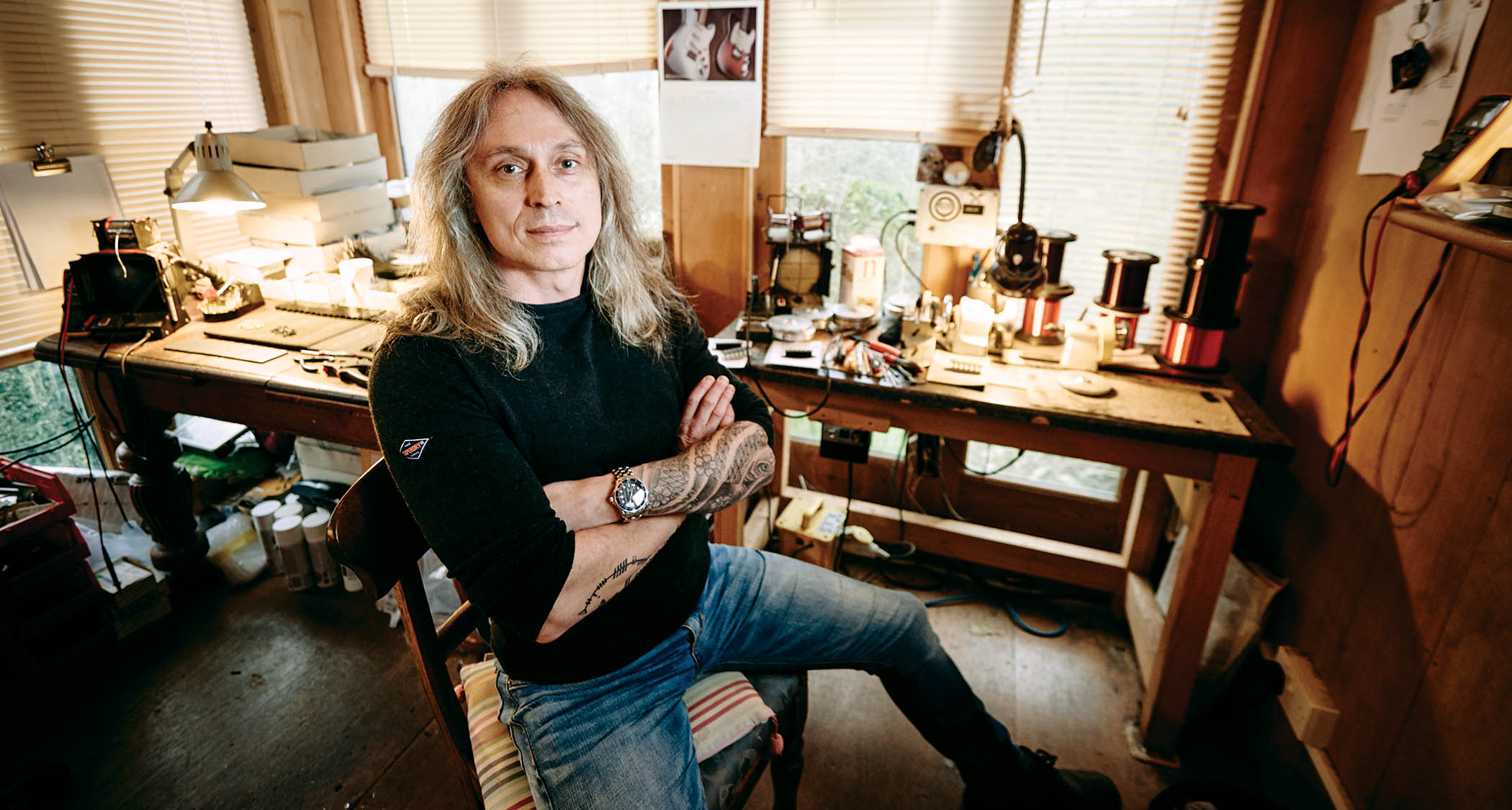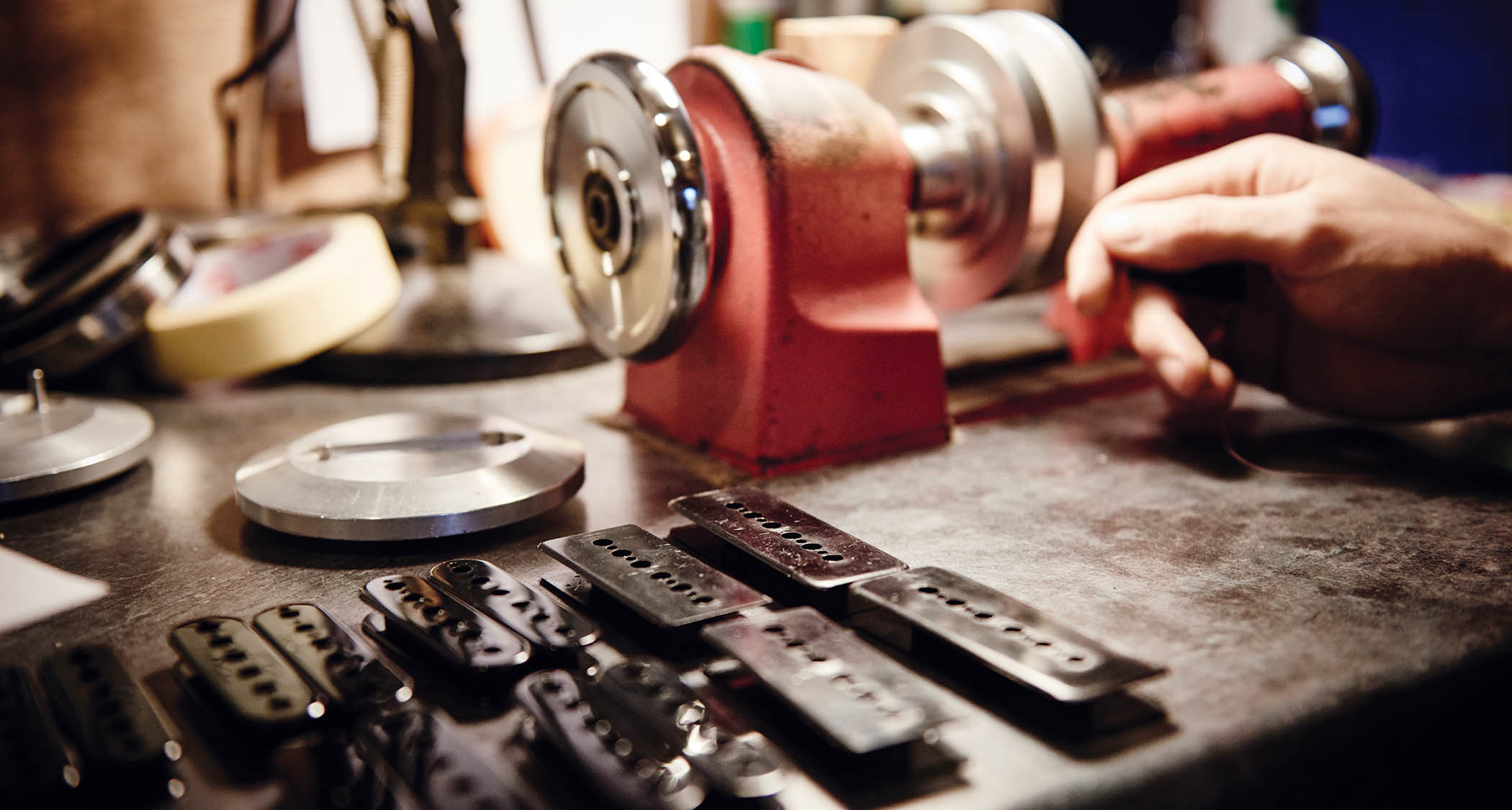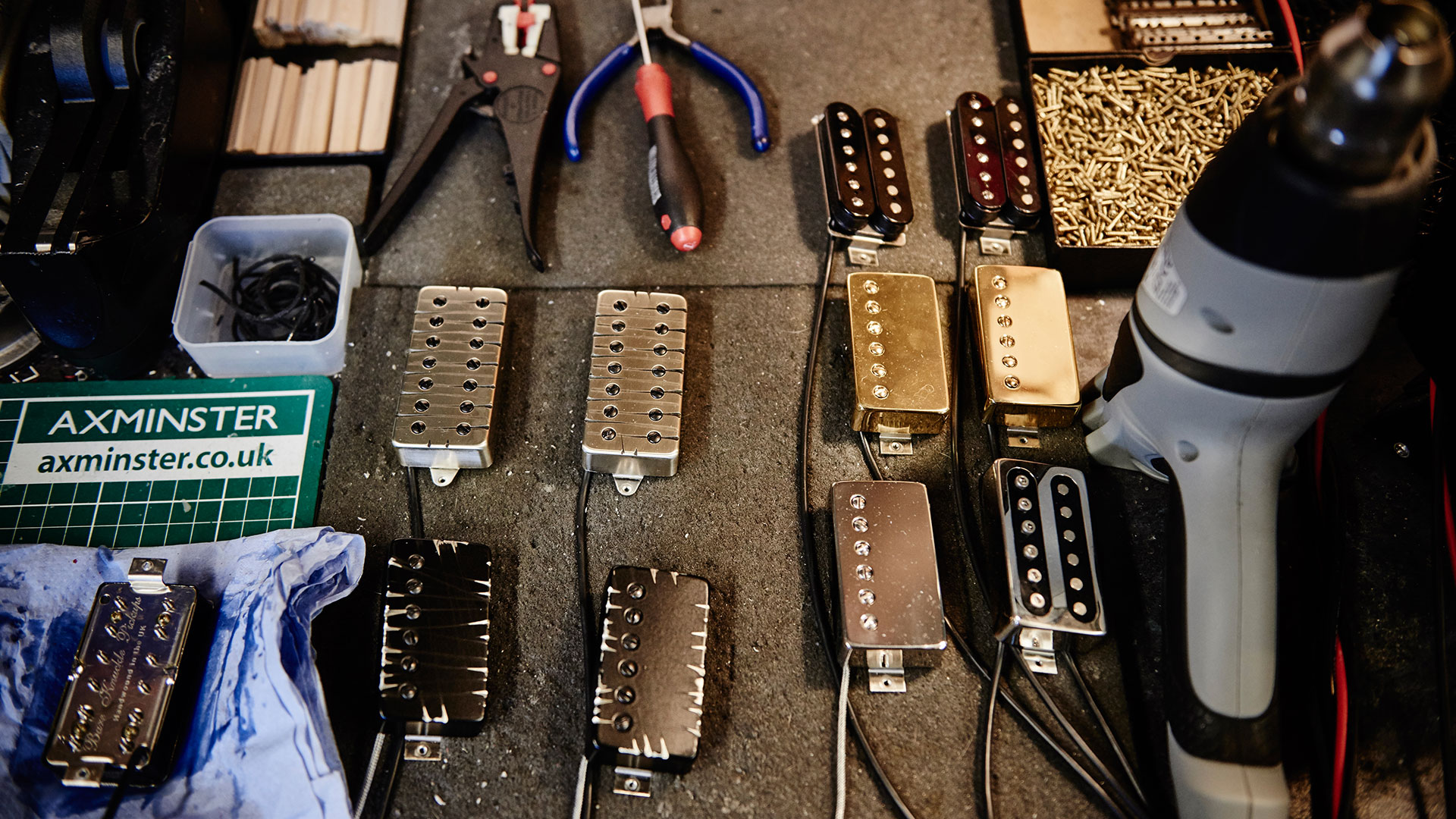“Working on Jimmy Page’s guitar was bucket list stuff for me”: Bare Knuckle’s Tim Mills on how he built the biggest indie pickup brand in the world – and why Page’s ‘Number One’ Les Paul sounds like Stevie Ray Vaughan’s Strat
The guitarist behind the beloved U.K.-based artisan pickup brand, explains how he got started in the biz, the attention to detail that makes Bare Knuckle so good – and what's coming next

In the seventies, Larry DiMarzio and Seymour Duncan broadened the tonal horizons for the electric guitar community by developing their own pickups to be retrofitted onto instruments made by other companies.
To this day, they are still very much masters of their trade, with innovations to suit just about any kind of player, from low-output passives for purists to enhanced firepower for higher-gain thrill-seekers – and everything in between.
Over the last two decades, however, a company from England has risen from being a relative unknown to becoming arguably the world’s largest independent electric guitar pickup manufacturer, thanks to some highly customizable and award-winning bespoke creations that guarantee tonal excellence.
We are, of course, talking about Bare Knuckle Pickups – the business founded by session guitarist Tim Mills in 2003 with an emphasis on everything being hand-wound to order, giving customers complete control on how their pickups should look and sound.
As well as producing best-selling circuits like The Mule and The Nailbomb, the specialists also have collaborated with guitarists like Steve Stevens and Misha Mansoor to create signature sets that are tailor made to get the job done. It all happened very organically, Mills says when asked about his journey from hopeful newcomer to becoming the brains behind an internationally respected phenomenon.”

What made you want to get into building pickups?
“I came to it as a player because I don’t have a science background. In the Nineties, I was playing for Elkie Brooks, a blues star with a career spanning 65 years. Later on, some friends asked me to help out in their Ozzy Osbourne tribute band. I knew it would be fun, but I had to emulate lots of different tones.
All the latest guitar news, interviews, lessons, reviews, deals and more, direct to your inbox!
“I started messing around with pickups just to see what worked. I got frustrated by the fact that nobody was describing what these things did. I felt like every pickup was marketed to say it was good at everything. The information was very generalized.
“I ended up pulling a pickup apart just to see what the hell was going on inside. I reverse-engineered one with a winding machine I’d cobbled together and then started experimenting with different permutations of magnets and wire.”
How did that end up becoming your full-time job?
“I put a website together with some designs, figuring it would be a nice way to earn [money] alongside teaching music and martial arts. I was looking for a name and realized there was a synergy between guitars and combat; it’s all hands-based. The penny dropped when I remembered that bare knuckle, the original form of fighting, was something we excelled at in this part of the world.
“It all felt quintessentially British. I wanted to prove we could make good stuff here. In my first year, I had two people with me; now there’s over 20 in the workshop plus all the IT, service and accounts teams. But it’s all done the same way. We use the same machines I put together back in the day. I think I’m now on the sixth motor for that winder.”
You must have done a lot of research to know exactly what you’re working with.
I became obsessed with tone. I had a mentor who gave me original Fifties pickups. I wanted to learn about why they could sound three-dimensional, ultra dynamic and touch-sensitive
“I became obsessed with tone. I had a mentor who gave me original Fifties pickups. I wanted to learn about why they could sound three-dimensional, ultra dynamic and touch-sensitive. I went down the wormhole of plastics, metals and carbon content, looking at the strand count in the wire and all that stuff.
“I also wanted us to be making our own parts. I ran into an engineer at a guitar show and asked if he could make a base plate exactly like an old Gibson. We analyzed everything to the finest degree and didn’t cut any corners, even down to the direction of the grain on the nickel silver.
“The same went for the tooling and magnets, with X-ray spectra graphs analyzing aluminum, nickel and cobalt. When it comes to retrofit pickups, people tend to want something hotter, but I studied low- and medium-output designs as well.”

It’s interesting how you make pickups that vary in terms of output, though everything is passive.
“EMG have really got their game together when it comes to active stuff. I can’t see anyone chasing them down that path. Their pickups do exactly what they say. Sure, other companies have come along with their own permutations of actives, but EMG still hold their own in that world. I felt there was more scope to develop by staying passive.
“Active pickups have an in-built preamp that sculpts the tone. It’s based around creating a lot of compression. That’s the great thing about them; you can put an active pickup on any guitar and it will sound consistently great. But in the Ozzy tribute, I needed something that could do Tony Iommi’s rock sound as well as Zakk Wylde’s metal sound. And I could only do that using passives.”

Customers have full aesthetic control when ordering from you. How crucial is that to the business?
“I wanted to expand on what a pickup could look like, so we concentrated a lot on aesthetics. There are a lot of custom finishing, from colors to etching and so on. We were the first to come up with the camo or tiger finish pickup.
“These are all part of guitar language now, but they came first through us. We’d mess around with things like acid etch, blow torches, burnt chrome – which technically you can’t do, because chrome doesn’t burn. But if you do it with nickel, all these glorious colors come out.
So what’s next for Bare Knuckle?
“We’re doing something with Claudio Sanchez from Coheed and Cambria. And we’re working on a signature for Tracii Guns. We started talking online; it all happened organically. That’s way better than me chasing somebody. If you give an artist something for free, it’s totally unsolicited and will probably end up on the shelf.
“I remember one day getting an order from someone called Steve Stevens and didn’t question it. A bit later, he emailed again asking if I’d like to come to a show. We met backstage and he got me to watch from his backline.
“We then started talking about a signature, which started a chain of events; I’ve since worked with Misha Mansoor, Chris Robertson, Adam Getgood and, most recently, Mike Stringer [Spiritbox]. This latest one has been really successful; it’s the pickup equivalent of a bulldozer.”

Who would be your dream client?
He actually sent his “Number One” 1959 Les Paul to my workshop because of a pickup issue just before the 2007 Led Zeppelin reunion
“I’d love to make something for Jimmy Page. He actually sent his “Number One” 1959 Les Paul to my workshop because of a pickup issue just before the 2007 Led Zeppelin reunion. It was fantastic to analyze such a brilliant guitar. The back of the neck had this odd carve where it got thin from frets three to nine.
“Interestingly, the neck pickup was just shy of 9k. Normally that would be muddy and hot, but because the magnet had discharged so much and the coil windings were heavily asymmetrical, it was behaving more like a single-coil. That’s why it had this woody, almost SRV sound.
“The bridge was a symmetrically wound 8.2k Seymour Duncan installed around the late Seventies. It was nicely balanced with a good growl. Most of the tone came from how much timber had taken off the neck, almost to Ibanez levels of thinness. I was amazed the truss rod hadn’t popped out. Honestly, working on Jimmy Page’s guitar was bucket list stuff for me.”
- Best pickups for metal 2025: our guide to upgrading for high gain heaven
- Best humbucker pickups 2025: buck up your guitar with mellow lows and punchy mids
- This article first appeared in Guitar World. Subscribe and save.
Amit has been writing for titles like Total Guitar, MusicRadar and Guitar World for over a decade and counts Richie Kotzen, Guthrie Govan and Jeff Beck among his primary influences as a guitar player. He's worked for magazines like Kerrang!, Metal Hammer, Classic Rock, Prog, Record Collector, Planet Rock, Rhythm and Bass Player, as well as newspapers like Metro and The Independent, interviewing everyone from Ozzy Osbourne and Lemmy to Slash and Jimmy Page, and once even traded solos with a member of Slayer on a track released internationally. As a session guitarist, he's played alongside members of Judas Priest and Uriah Heep in London ensemble Metalworks, as well as handled lead guitars for legends like Glen Matlock (Sex Pistols, The Faces) and Stu Hamm (Steve Vai, Joe Satriani, G3).
You must confirm your public display name before commenting
Please logout and then login again, you will then be prompted to enter your display name.



